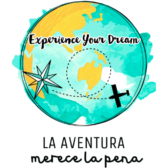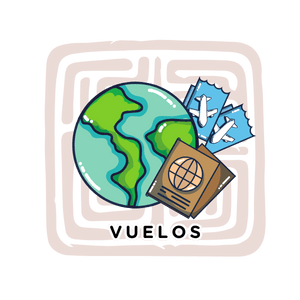Don't miss the rest of the posts about Australia:
Planning a trip to Australia can seem like a daunting task due to the country's vast expanse and the variety of options it offers. From idyllic beaches to breathtaking deserts and vibrant cities, Australia is a destination that combines adventure, nature, and culture. In this guide, we provide all the information you need to plan your trip efficiently, from entry requirements to the best destinations, transportation, and currency exchange.
Basic information for travelling to Australia
Language: The official language of Australia is English, however, in tourist areas it is relatively easy to find people who speak other languages such as Spanish. Aussies try to understand you and make themselves understood, so don't worry if you are not fluent in English.
Currency: He Australian dollar is the official currency of Australia. In Australia, there are 5, 10, 20 and 50 cent coins, and one and two dollar coins. The $1 and $2 coins are gold plated. The $2 coin is smaller than the $1 coin. As for the banknotes, they are very colorful and have special security features. They are very similar to the English pound, the Queen's portrait is on them. For more information, visit the Australian banknotes page from the Reserve Bank of Australia website. We use This website to know the exchange rate.
Traditions: In Australia you will find interesting customs, for example, you will meet many barefoot people, not everyone and it depends on the state you are in, don't expect everyone to be barefoot because that is not the case... They love activities. outdoors, barbecues, surfing, hiking…
Plug: In Australia the standard voltage is 230 V, so as a general rule, the appliances you use at home will work just as well if you travel to Australia. The frequency is 50 Hz. The plugs and sockets are type I.
Activities: Buys your tours and activities in Australia here.
Internet: Having an internet connection in Australia is practically indispensable to fully enjoy your trip. eSIM The best option, it will give you peace of mind and you won't have to rely on public networks. Plus, reserving them in advance can save you money and hassle. You can purchase your eSIM card here either here.
Travel insurance It may be a requirement to travel to Australia, depending on your nationality. For Spain, for example, it is not mandatory but it is highly recommended, we explain it below, you can reserve it here.
Planning a trip to Australia: Required documentation 📄✈️
The first and essential thing to organize a trip to Australia is that your passport is in order and valid for more than 6 months. This requirement is quite common and It is needed to travel to almost any country.
The visa issue in Australia is quite strict and there are many types of visas to choose from.
If you want to stay for a long time, many travelers apply for a visa Working Holiday (Here is the official link) with which you can stay in the country for a year or two, and student visas are very popular among temporary residents, in this post about studying in Australia, you have all the information. If you would like to give yourself the opportunity to study in Australia, we can help you for free.
On the other hand, if your goal is to travel to Australia for a holiday, you will need a tourist visa. If you are a European citizen, the most common way to apply for an eVisitor visa (subclass 651) is to apply for this visa. totally free,Be careful with the websites that appear in the Google search engine and that charge you for the visa since you can carry out the procedure online in this link.
If your passport is not European, you will most likely need an Electronic Travel Authority – or ETA – visa (subclass 601). To apply for this visa, you can do so through this link.
You can see in our plans Travel Consulting Visa support is included so that you don't have to worry about making arrangements in the wrong places. Take a look and let us help you organize a trip to Australia.
PLANNING A TRIP TO AUSTRALIA: PREPARATIONS
When to travel to Australia? 🌸🍁❄️☀️
Australia is giant, and its climate varies depending on the region you visit. Here's a breakdown to help you choose the best season:
Summer (December – February): Intense heat inland and in the north. Perfect for beaches like Bondi Beach and the Great Barrier Reef.
Autumn (March – May): Pleasant temperatures, fewer tourists, and spectacular scenery in Melbourne and Tasmania.
Winter (June – August): Ideal for visiting the outback without dying of heat, and for skiing in the Australian Alps.
Spring (September – November): Mild climate, flourishing nature, and fewer crowds.
If your plan is to travel around the country, The best time is spring or autumn, when the weather is more balanced.
What to pack for Australia? 🎒
As with almost any destination, you will need to bring clothing that is appropriate for the area of Australia you are going to. For example, if you are only going to Sydney, you should bear in mind that it is like Europe, there is winter and summer. On the other hand, if you are also going to add Brisbane, Gold Coast or Darwin, they have a tropical climate where it is quite hot all year round.
You should also keep in mind that the seasons are different.
- Summer = December – February
- Autumn = March – May
- Winter = June – August
- Spring = September – November
Flights
Traveling to Australia is not super cheap but The time of year you choose for your trip influences very significantly on the cost of the flight and your budget. The Normal price is between 900 and 1,100 euros, depending, as always, on stopovers, the time of year you travel, the airline, the departure and arrival city, etc. It is a fairly long flight, about 11,000km from Europe, so we advise you to read this post where we give you tips on how to survive a long flight.
Our advice is to play with dates, stopovers and companies using Skyscanner and compare prices. In this post We tell you our tricks to find cheap flights.
Health Insurance
Although having health insurance may be a requirement for traveling to Australia, it depends on your nationality. For Spain NO It is mandatory for tourism in Australia, but in our opinion, to travel to Australia, taking out travel insurance is an essential requirement. mandatory or not.
As in the United States, the Healthcare in Australia is private, so you can imagine that the costs associated with any medical treatment or consultation are a real pain. You don't want to be snorkelling, walking around the Sydney Opera House or trekking and have an accident that means you have to go to the doctor and you don't have medical insurance, and they charge you $550 just to see you.
We Trust In IATI Insurance and that is why we take out one of their policies on every trip we make.
International driving license
If you are planning to do a road trip when you are on holiday in Australia like the one we did Tasmania, Queensland or the Great Ocean Road, you must obtain an International Driving Permit.
To request it, you must go to the traffic headquarters, it costs 10.50 euros and is valid for one year. You can read all the information and manage it here.
Packing / Weather
As with almost any destination, you will need to bring clothing that is appropriate for the area of Australia you are going to. For example, if you are only going to Sydney, you should bear in mind that it is like Europe, there is winter and summer. On the other hand, if you are also going to add Brisbane, Gold Coast or Darwin, they have a tropical climate where it is quite hot all year round.
You should also keep in mind that the seasons are different.
- Summer = December – February
- Autumn = March – May
- Winter = June – August
- Spring = September – November

Time difference
Australia is such a big country that It is divided into 3 different time zones. Therefore, depending on the city you travel to, the time difference will be different.:
- Western Time Zone (UTC+8): The Australian west coast has a time difference of 6 and 7 hours with respect to Spain (UTC+1) when it is summer and winter respectively.
- Time zone central (UTC+9.5): The entire central area of Australia, which includes the state of New South Wales and the Northern Territory, is 7 or 8 and a half hours behind Spain, depending on the time of year.
- Eastern Time Zone (UTC+10): The easternmost region of the country, where cities such as Gold Coast, Sydney or Melbourne are located, is 8 or 9 hours away from Spain.
How much does it cost to travel to Australia?
Australia has a reputation for being an expensive country, and it is, however, in exchange for the Euro, for example, it is not that expensive, since the Australian dollar is lower. In addition, Australia offers many free activities, such as visits to museums, monuments and natural parks.
You can take a 2-week route with a budget of between 3,500-4,500 euros, including flights, which will take almost half of it, and Australia is far, very far away… If you want more details about the budget, click here.



























